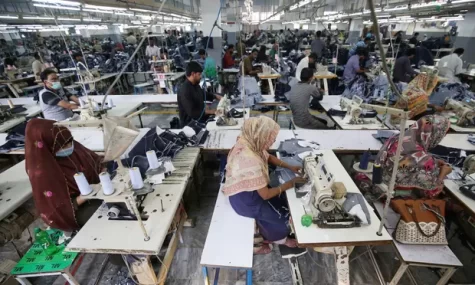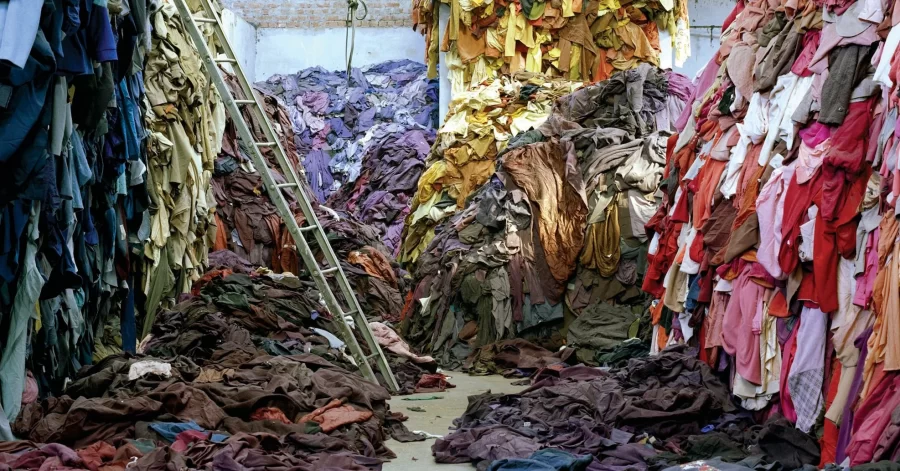Poisoning the Planet, in Style
The “here today, gone tomorrow” nature of fast fashion has material consequences.
December 19, 2022
Cheaply made clothes started flying off the virtual racks as the internet discovered the seemingly mild phenomenon that is fast fashion. With low prices and trendy dupes, these stores seemed like the best thing to happen to fashion since the rise of mom jeans. But if you’re wondering if stores like Shein and Forever 21 are too good to be true; they are.
Fast fashion refers to brands that pump out high volumes of clothes at a low price. As a result, these companies usually have no regard for the environment or their employees. Many of these operations have been accused of extreme pollution, depletion of natural resources, and even human rights violations.
POLLUTION
Everyone knows that pollution is bad. But let’s be honest: Kylie Jenner’s private jet is not the leading cause of excessive waste worldwide. Fast fashion brands are meant to keep up with the trends. And in the age of social media and lighting fast communication, the trends last two months. This means that people are buying more clothes, and wearing them less. According to earth.org, an estimated 11.3 million tons of clothing end up in landfills annually, which totals around 85% of all garments produced per year. Donating old clothes to thrift stores or the Salvation Army helps, but second-hand shops are truly just detours from the inevitable landfills.
DEPLETION
You may have heard fast fashion come up in discussions of natural resources, namely the depletion of them. Here are the facts: 1.)The World Economic Forum states that it takes around 700 gallons of water to produce 1 cotton shirt. Generally, 700 gallons is a lot of water. And this water isn’t totally safe, either. Pesticides and fertilizers are used in production to yield increased amounts of cotton crops. 2.) In the factory, polyester is an easy, stretchy material used to make leggings, shirts, jackets, and really anything else. Polyester also takes around 500 years to degrade fully. 3.) With the new focus on greenhouse gasses, the global gaze turns to the fashion industry, considering it is responsible for around 10% of worldwide carbon emissions, as stated by the World Economic Forum. Did any of these fashion fast facts sound positive to you?
ETHICS

In history class, you’ve learned about the early 1900’s sweatshops. These shops subjected workers to unfathomable conditions and meager wages fit for the Great Depression era. Today, in 2022, fast fashion brands still force their employees to work in sweatshop-like environments. Here, workers are exposed to harsh chemicals and overall dangerous practices. Factories themselves can be on the verge of collapse, but people will be forced to continue their work until the last brick hits the ground. Child labor laws are not taken too seriously, either. These companies will often employ anyone who wants to work in their factories. Many young girls in Bangladesh and India work in factories under the promise of earning decent wages. Evidently, no one working in the fast fashion supply chain makes a steady income. Some companies like Shien still pay their employees per item produced, which poses serious ethical concerns.
Obviously, fashion is a huge part of self-expression and culture, and when luxury brands are just slightly above the price point, it’s easy to turn to stores like Shein, H&M, and Zara, which are waiting patiently for your business. If you’re looking for inexpensive, though, thrift stores often carry the looks you want without the turbulence. Plato’s Closet provides major brands for a fraction of the cost, while Goodwill and Red White & Blue Thrift are more likely to have vintage styles.
If you’re looking to cut out individual waste, attempt to find a style or concept that suits you and build up a wardrobe that you absolutely love. With this new look, you can avoid being influenced by trends and making unnecessary purchases. Save the planet in style and cut out fast fashion for good.












